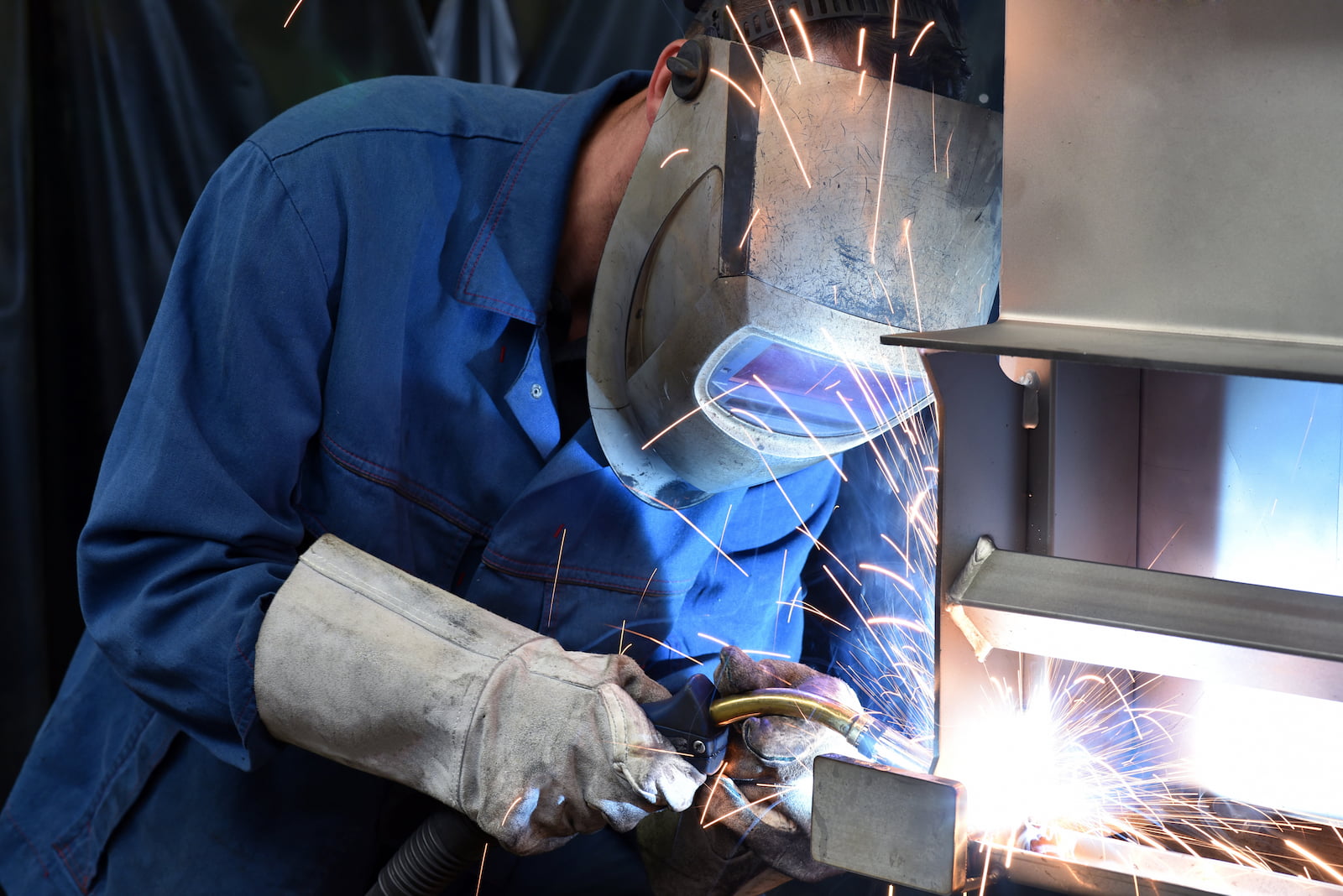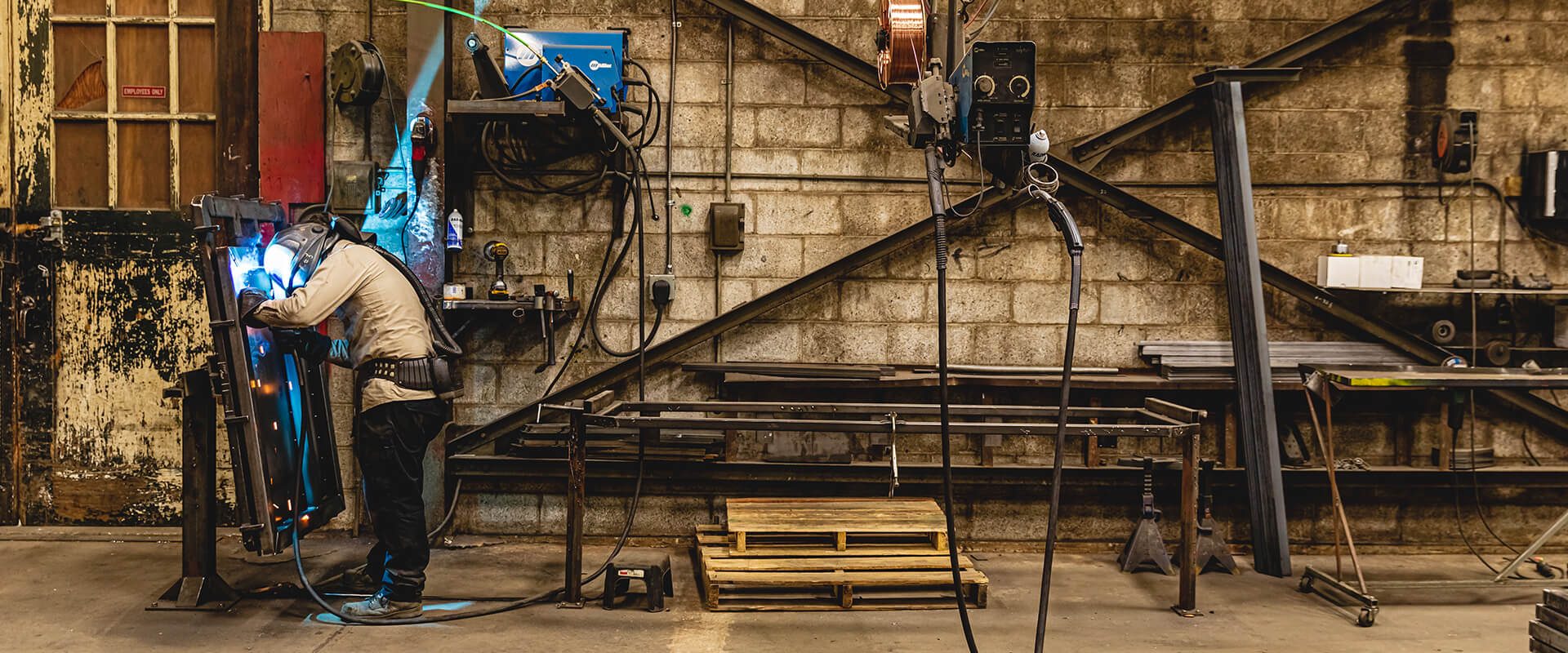Everything about Welding: Key Insights Into Techniques and Ideal Practices for Success
Welding incorporates a range of methods, each fit for details materials and applications. Comprehending these approaches, such as GMAW, SMAW, and TIG, is vital for attaining ideal outcomes. The right equipment and safety techniques can not be neglected. As preparation and troubleshooting play important roles in the welding process, understanding these components can greatly boost the top quality of the end product. What are the crucial aspects that assure an effective weld?
Recognizing Different Welding Techniques
Welding techniques incorporate a range of methods, each matched to specific applications and products. Among the most usual strategies are Gas Metal Arc Welding (GMAW), Secured Steel Arc Welding (SMAW), and Tungsten Inert Gas Welding (TIG) GMAW, additionally referred to as MIG welding, is prominent for its rate and adaptability, making it excellent for thin products. SMAW, or stick welding, is preferred for its simplicity and effectiveness in exterior settings, especially with thicker steels. TIG welding supplies accuracy and control, making it ideal for elaborate work and non-ferrous steels (Belgrade Fabrication). Each strategy has its special advantages and factors to consider, enabling welders to select the very best approach based on the job's demands, product type, and wanted end results. Understanding these methods is essential for effective welding
Vital Welding Devices and Tools
While different welding strategies require specific skills, the best tools and tools are equally essential for accomplishing top quality results. Important welding tools includes welding machines, which differ relying on the technique-- such as MIG, TIG, or stick welding. Safety equipment, consisting of aprons, gloves, and headgears, warranties safety and security and convenience during the process. Furthermore, clamps and components aid secure materials in location, making certain precision in welds. Consumables like welding poles, wire, and protecting gas are additionally critical parts that influence the quality of the weld. Furthermore, devices such as mills and cutters facilitate surface preparation and post-weld finishing, adding to an expert result. Purchasing top notch equipment eventually enhances the performance and performance of welding jobs.
Safety Practices in Welding
Correct safety and security techniques are essential in the welding sector to secure employees from prospective threats. Welders must put on ideal individual safety equipment (PPE), including headgears with correct shading, gloves, and flame-resistant garments. Appropriate ventilation is vital to reduce direct exposure to harmful fumes and gases generated throughout the welding procedure. Additionally, employees ought to be learnt the right handling of welding equipment to avoid mishaps. Fire precaution, such as maintaining combustible materials away from the welding location and having fire extinguishers easily available, are required. Regular assessments of tools and offices can help recognize potential hazards before they lead to mishaps. By sticking to these safety methods, welders can create a safer working atmosphere and minimize dangers connected with their profession.
Readying Products for Welding
Preparing products for welding is a vital step that significantly affects the top quality and stability of the final item (Montana Mobile Welding and Repair Belgrade). Proper preparation entails cleaning the surfaces to remove impurities such as rust, oil, and dirt, which can jeopardize the weld. Methods such as grinding, sanding, or using solvents are frequently used to achieve a tidy surface. In addition, guaranteeing that the materials mesh well is crucial; gaps can result in weak welds. It's additionally crucial to take into account the positioning and positioning of the components, as this will influence the ease of welding and the final outcome. Finally, choosing the appropriate filler product and making certain compatibility with the base metals is necessary for achieving strong, long lasting welds
Tips for Getting High-Quality Welds
Accomplishing high-grade welds calls for interest to information and adherence to finest techniques throughout the welding procedure. Proper joint prep work is crucial, making certain surface areas are free and clean from contaminants. Selecting the suitable filler product and welding method based upon the base steels is critical for excellent bonding. Preserving regular traveling rate and angle while welding can avoid defects and advertise uniformity. In addition, controlling warmth input is necessary; excessive warmth can bring about bending and deteriorated joints. On a regular basis evaluating the welds throughout the procedure enables immediate modifications if needed. Using suitable post-weld treatments, such as cleaning and stress and anxiety relief, can enhance the sturdiness and integrity of the weld, ultimately making certain a successful end result.
Repairing Common Welding Issues
Welding often provides obstacles that can affect the top quality and honesty of the final item. Common issues such as porosity, irregular weld beads, and overheating can occur, each requiring certain troubleshooting strategies. Understanding these issues is essential for welders to boost their abilities and achieve perfect results.
Porosity Troubles Clarified
Porosity link can commonly be forgotten, it continues view it to be a crucial concern in welding that can endanger the honesty of a finished product. Porosity refers to the existence of little gas pockets within the weld grain, which can compromise the joint and lead to premature failing. This trouble usually occurs from pollutants, dampness, or incorrect shielding gas coverage during the welding procedure. To alleviate porosity, welders ought to confirm that the base materials are tidy and dry, use ideal shielding gases, and keep constant welding specifications. Consistently examining the tools and setting can likewise aid identify possible issues prior to they materialize in the weld. Dealing with porosity successfully is essential for attaining solid, sturdy welds that satisfy high quality requirements.

Irregular Weld Beans
Irregular weld grains can significantly influence the quality and toughness of a completed item. Various variables add to this problem, including improper travel rate, inaccurate amperage settings, and inconsistent electrode angles. When the welder relocates also swiftly, a bead may appear slim and lack infiltration, while relocating too gradually can create excessive build-up. In addition, using the incorrect amperage can lead to either undercutting or extreme spatter, both of which compromise weld integrity. The welder's strategy, such as inconsistent lantern activity, can also bring about unequal grain look. To reduce these troubles, welders should concentrate on preserving stable, regulated activities and guaranteeing correct devices settings to attain harmony in their welds. Consistency is key to achieving dependable and solid welds.
Overheating and Warping Issues
Extreme warm throughout the welding procedure can result in significant getting too hot and contorting issues, impacting the architectural stability of the workpiece. These problems often materialize as distortion, which can endanger alignment and fit-up, making further setting up testing. Factors contributing to overheating include the choice of welding criteria, such as voltage and take a trip speed, as well as the sort of material being welded. To mitigate these issues, welders must preserve consistent travel speed and proper warm input while keeping track of the workpiece temperature level. Additionally, pre-heating or post-weld warm therapy can help ease stresses triggered by quick air conditioning - Montana Mobile Welding and Repair Belgrade Fabrication. Routine examination and adherence to best methods are important in stopping getting too hot and guaranteeing the long life and dependability of welded structures
Regularly Asked Inquiries
What Are the Occupation Opportunities in the Welding Industry?
The welding industry supplies diverse profession opportunities, including placements as welders, welding cast iron to steel instructors, assessors, and engineers. Professionals can work in production, building and construction, aerospace, and automobile fields, gaining from solid need and competitive incomes in different duties.
How Can I Boost My Welding Speed Without Compromising Quality?
To enhance welding speed without giving up quality, one ought to practice efficient methods, preserve devices, enhance settings, and boost hand-eye coordination. Regular training and seeking responses can also considerably add to accomplishing much faster, high-quality welds.
What Certifications Are Available for Welders?
Numerous accreditations exist for welders, including those from the American Welding Culture (AWS), the National Center for Building And Construction Education and Research (NCCER), and numerous industry-specific organizations. These credentials improve employability and show ability proficiency.
Just How Does Welding Affect the Properties of Metals?
Welding affects the residential or commercial properties of metals by altering their microstructure, which can bring about changes in ductility, toughness, and firmness. Warmth input and cooling rates during the process greatly impact these material qualities.
Can I Weld Dissimilar Metals With Each Other?
